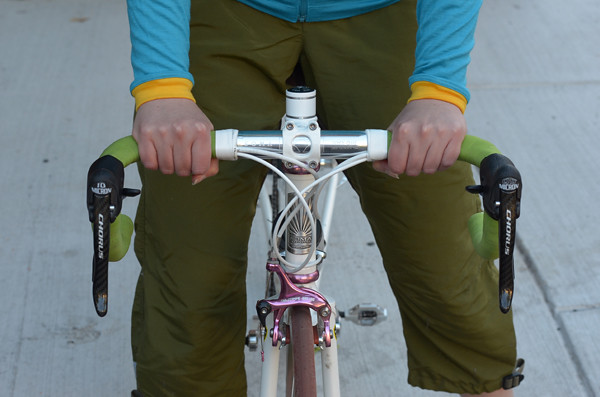I will be referring to the tops position, which (which is included in the Silca calculator). This is when you have your hands on the flat part of drop handlebars, as if they were flat handlebars. For reference, as shown by the blog Lovely Bicycle!, the tops position is depicted immediately below. Your torso tends to be a bit more upright than when riding on the hoods, depicted below that.
The calculators generally don't address the case of power required for a flat bar bike. Here, we have to extrapolate from basic principles. One trend among professional road cyclists is to switch to narrower and narrower handlebars, in contrast to the previous tradition that your handlebars should be ab out as wide as your shoulders (NB: this is a good starting position for comfort, but one should experiment depending on your needs. Gravel cyclists may be trending towards wider bars for better control off-road.) We can assume that a wider flat bar would be worse drag than the hoods or tops of a drop handlebar, if other aspects of the rider's position (e.g. torso angle) were constant. Thus, I would assume that the reverse is true, i.e. wider bars have higher drag. I'm not that familiar with flat bars, but I believe they tend to be wider than drop bars; the 2021 Specialized Diverge's flat bar variant comes stock with a 750mm flat bar, although I assume many riders will trim their bars slightly to fit. Performance road drop bars typically top out at 460mm wide, with some gravel cyclists using drop bars wider than that. I am not currently aware of any actual aerodynamic testing of flat bar versus drop bar hoods. I am under the impression that testing of narrower handlebars has been a combination of wind tunnel, and field testing using a method popularized by Robert Chung, andplus received wisdom.
I mentioned that most cyclists can't sustain the drops position for very long periods. To clarify, you can (and arguably should) set up your bicycle such that the drops position is not too low, and with some adaptation, many cyclists should be able to spend a significant amount of time in the drops without discomfort, e.g. up to 10 minutes at a stretch or more, possibly for several stretches during a long ride. I do mean that youmost people probably won't be doingcomfortable in the whole ofdrops all throughout a long ride in the drops.


